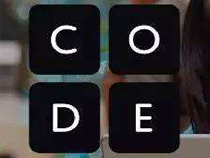手机端怎样用rem+scss做适配
这次给大家带来手机端怎样用rem+scss做适配,手机端做rem+scss适配的注意事项有哪些,下面就是实战案例,一起来看一下。
rem介绍
rem(font size of the root element)是指相对于根元素(即html元素)的字体大小的单位。
假设根元素的字体大小是10px, 则5rem的大小为 5*10=50px,例如
html{
font-size: 10px;
}
p{
width: 2rem; /* 2*10 = 20px;*/
margin: 1rem;
}
rem来做适配
以前我们往往这样做页面:viewport width 设置为 device-width,然后选我们需要兼容设备的最小宽度(一般是320px)。根据这最小宽度来做页面。单位使用px和百分比。在宽度不同的设备上,页面的字体大小,内容尺寸都是一样的,不同的是,大屏的内容间的空隙比小屏的大。所以这样做的缺点就是,页面在某些尺寸的设备上显示的效果不好。
如果用rem来页面,我们会根据不同的设备宽度在根元素上设置不同的字体大小。宽度越宽,字体越大。然后对原本使用px的地方使用rem来替换。这样,字体大小,内容尺寸,对随着屏幕宽度的变大而变大。
首先js设置html的默认字体大小(写在html头部)
<script type=text/javascript>
var bodyElement = document.documentElement || document.body,
RC = {
w: 750,
h: 1206
}, //默认设计稿宽高
GC = {
w: document.documentElement.clientWidth || window.innerWidth || screen.width,
h: document.documentElement.clientHeight || window.innerHeight || screen.height
};
function setFontSize(){
var rightSize = parseFloat((RC.w / RC.h).toFixed(1)),
currentSize = parseFloat((GC.w / GC.h).toFixed(1)),
lastHTMLSize = 16, // 默认16是因为html默认字号是16px
html = document.getElementsByTagName(html)[0];
if(rightSize > currentSize){ // 长屏
lastHTMLSize = 16;
}else if(rightSize < currentSize){ //宽屏
lastHTMLSize = (RC.h / GC.h * GC.w) / RC.w * 16;
}
html.style.fontSize = GC.w / lastHTMLSize + 'px';
}
setFontSize();
</script>
设置scss文件px转rem
// 默认16是html默认字号
// 默认750是设计稿默认宽度
// $n是量取设计稿的距离
@charset UTF-8;
@function rem($n) {
@return $n / (750 / 16)+rem;
}
编辑方便调用的函数:
@function getTop($n) {
@return ($n - 1206 / 2) / (750 / 16)+rem;
}
@function getLeft($n) {
@return ($n - 750 / 2) / (750 / 16)+rem;
}
@function getRight($n) {
@return (($n - 750) / 2) / (750 / 16)+rem;
}
@mixin center($left, $top) { //左右居中 上变
position: absolute;
left: 50%;
top: rem($top);
margin: 0 0 0 getLeft($left);
}
@mixin centerlt($left, $top) { //上下,左右居中
position: absolute;
left: 50%;
top: 50%;
margin: getTop($top) 0 0 getLeft($left);
}
@mixin centerrt($right, $top) { //上下,左右居中
position: absolute;
right: 50%;
top: 50%;
margin: getTop($top) getRight($right) 0 0;
}
@mixin middlert($right, $top) { //上下居中 右变
position: absolute;
right: rem($right);
top: 50%;
margin: getTop($top) 0 0 0;
}
@mixin centerb($left, $bottom) { //左右居中 下变
position: absolute;
left: 50%;
bottom: rem($bottom);
margin: 0 0 0 getLeft($left);
}
@mixin leftTop($left, $top) { //左变 上变
position: absolute;
left: rem($left);
top: rem($top);
}
@mixin rightTop($right, $top) { //右变 上变
position: absolute;
right: rem($right);
top: rem($top);
}
@mixin leftBottom($left, $bottom) { //右变 上变
position: absolute;
left: rem($left);
bottom: rem($bottom);
}
调用上面的函数(宽高距离用ps量实际距离即可,默认设计稿宽750):
page1-img1{
width: rem(473);
height: rem(173);
@include centerlt(139, 767);
}
相信看了这些案例你已经掌握了方法,更多精彩请关注云资源网其它相关文章!
相关阅读:
html5怎样做出图片转圈的动画效果
用H5的WebGL如何在同一个界面做出json和echarts图表
H5的语义化标签新特性应该如何使用
以上就是手机端怎样用rem+scss做适配的详细内容,更多请关注云资源网其它相关文章!
声明:本站所有文章,如无特殊说明或标注,均为本站原创发布。任何个人或组织,在未征得本站同意时,禁止复制、盗用、采集、发布本站内容到任何网站、书籍等各类媒体平台。如若本站内容侵犯了原著者的合法权益,可联系我们进行处理。




